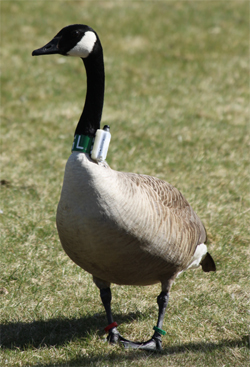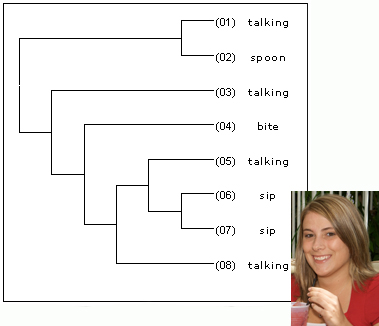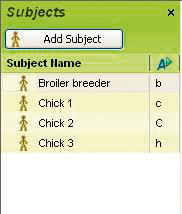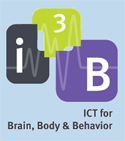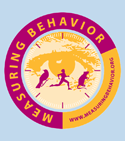Why does a customer select your product? Who uses it, and how? What are their expectations regarding taste and structure? What do they think of the experience, and how do they dispose it?
Annelies Verkerk
Recent Posts
Topics: FaceReader, facial expression analysis, TrackLab, consumer behavior, consumer behavior research
Today, it’s all about bird behavior.
Interested? Read on!
Beautiful birds
Don’t we all enjoy the variety and intensity of bird colors? Male birds have perhaps the most impressive color display in nature. Those with bright colors are generally healthier and have access to good food which contains pigments. Therefore, in general, female birds prefer males with the most conspicuous colors. Unlike humans, birds are able to see light in the ultraviolet color range. Some bird species have structures in their feathers that reflect UV light. A well-known example of structural coloration is peacock feathers which are pigmented brown, but appear blue, turquoise and green because of reflection by a microscopically structured surface [1]. Most research on the role of colors in the UV range on mating preference is done with species with such structural coloration. But pigments themselves can also contain components that are visible in the UV range and these may affect mating preference. Investigating this will increase our knowledge on sexual selection in bird species. A group of researchers from the University of Coimbra and the University of Porto, Portugal investigated whether pigments in the UV range play a role in preference of the European serin females (Serinus serinus) for their males. European serin males have a very conspicuous carotenoid-based yellow color. The authors divided wild captured birds into a high-pigment and low-pigment group.
Topics: birds
I may be atypical, but for the ease of explaining coping mechanisms in stressful situations, I put myself in the spotlight. I am afraid of heights, spiders, mice, rats, ants, horror movies, needles, and skiing downhill at high speed. So to keep myself from going crazy, I sometimes need to lower my stress levels. How? For example, when watching a scary movie, I tend to look away from the screen when it gets really scary. In those cases, I immediately feel my stress levels reduce. I can breathe again and my heart rate lowers. That’s how I cope with stress. Science tells us that when confronted with a stimulus that is threatening, a person can either adopt a vigilant strategy by looking more at the stimulus or an avoidant strategy by looking away. Having a behavioral coping strategy means that a person can regulate emotions and deal with stressful situations.
5 videos on neuromarketing and facial expression analysis in 2013
Posted by Annelies Verkerk on Dec 23, 2013
1) Neurotalent of the year 2013
Vote for Peter Lewinski as the Neurotalent of the year 2013! To assess ad effectiveness Peter Lewinski used facial coding software that tracks over 500 superimposed key-points on a 3D artificial facemask. He gathered online 900 recordings (0.7 million frames) of facial reactions to advertisements and analyzed over 4.1 million unique data points.
Topics: emotion recognition, FaceReader, facial expression analysis, Neuromarketing, eye tracking, avatar, neuropsychology
A recent observational research study performed by Rydenfalt et al. explored the efficacy of the World Health Organization (WHO) Surgical Safety Checklist and the results of its proper usage. The WHO Surgical Safety Checklist is developed by professionals and, when applied as intended, can help increase patient safety. The checklist is based on a core set of safety standards. Read more on the WHO website.
Topics: The Observer XT, video observation, doctor patient interaction, medical encounter, Viso
Presidential debate analyzed using FaceReader – featured on CNN
Posted by Annelies Verkerk on Oct 5, 2012
Software reads candidates’ faces - Prof. Chris Kowal applies FaceReader to political candidates. Go directly to CNN.com to view the video.
Basic emotions, represented by facial expressions, are not conscious and can thus deliver great information about subconscious processes. What did Prof. Chris Kowal measure on Romney's face? Which emotions did he measure on Obama’s face?
Topics: emotion recognition, FaceReader, facial expression analysis
In infancy you can observe an explosive growth. Many researchers focus on this age group. Think about studies aimed at learning more about speech behavior, maternal sensitivity, or learning behavior in infancy.
Would you like to learn more? We've recently (October 2016) updated this list with blog posts related to infant behavior research!
- O.U.C.H. Lab - The Opportunities to Understand Childhood Hurt (O.U.C.H.) Laboratory run by Dr. Rebecca Pillai Riddell (watch her TEDx Talk) focuses on understanding how caregivers and children interact within the context of pain. Their research is performed in a variety of settings, from their own lab space on the York University Campus to the Neonatal Intensive Care Units of major Toronto hospitals. Noldus and the O.U.C.H. Lab staff worked together to create the perfect lab space. Their lab is divided into two areas with observational technology (including up-to-date audio/video equipment), physiological equipment (by MindWare, LLC), and portable observational computing systems.
Topics: The Observer XT, infant behavior, coding schemes, parent-child interaction, Observation lab, behavioral research
Patterns in behavior are everywhere around us. Think about the sequence of behavior when you do the laundry, get ready in the morning, play a game of soccer, or drive your car to work. Many behavioral scientists focus on these highly structured phenomena. For instance, researchers now closely examine social interactions or the execution of tasks. Many patterns are missed when observed with the naked eye. Fortunately, cameras and specialized software can be used to aid in the detection of interesting behavior patterns.
Topics: animal-human interaction, emotion recognition, T-patterns, Theme, human behavior research, cats
The coding scheme or ethogram determines what data you collect and is, thus, an essential part of your behavioral study. How to develop a coding scheme that will provide you with the information you need? You can set up your coding scheme on paper, but you can also use The Observer XT software, a tool which can assist you in the entire workflow of an observational research project.
Topics: The Observer XT, animal behavior research, on-site research, video observation, Educational research, classroom observation software, coding schemes, Observation lab, human behavior research, consumer behavior, mobile observation, Portable lab





